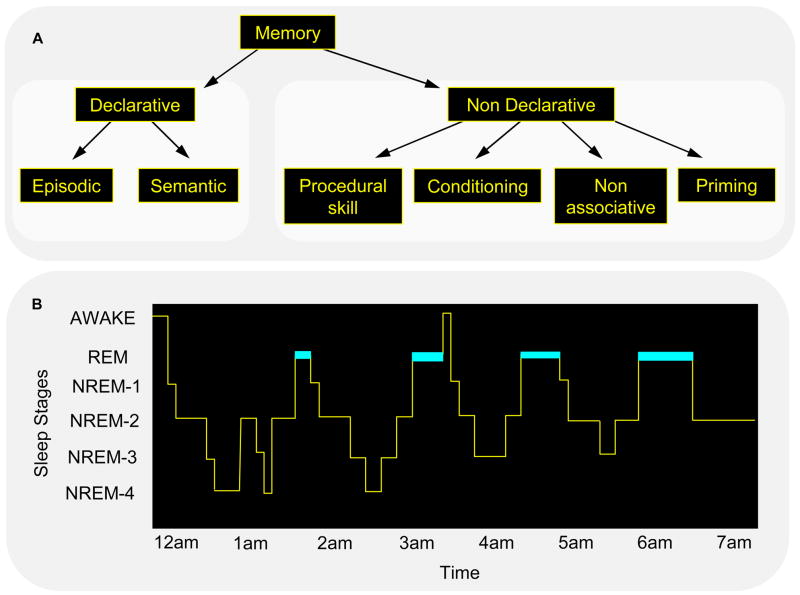Figure 1.
Forms of memory and stages of sleep. Neither memory (A) nor sleep (B) represents a homogeneous phenomenon. (A) Declarative memory includes consciously accessible memories of fact-based information (i.e., knowing “what”), and contains several subcategories, including episodic memory (memory for events in one’s past) and semantic memory (memory for general knowledge) [110]. In contrast, non-declarative memory includes all non-conscious memories, and includes subcategories such as conditioning, implicit memory and procedural memory (i.e., knowing “how”). (B) In mammals, sleep is divided into REM and NREM sleep, and in primates and felines, NREM sleep has been divided into sub-stages 1 through 4, corresponding to increasingly deeper states of sleep [7]. The deepest NREM stages, stages 3 and 4, are collectively referred to as slow wave sleep (SWS), based on a prevalence of low frequency (0.5–4 Hz) cortical oscillations. Dramatic changes in brain electrophysiology, neurochemistry and functional anatomy occur across these sleep stages, making them biologically distinct from the waking brain, and dissociable from one another. For example, SWS is characterized by a diminution in cholinergic activity and REM sleep by a suppression of release of norepinephrine from the locus coeruleus and serotonin from the raphe nucleus. (Reproduced with permission from [8])

